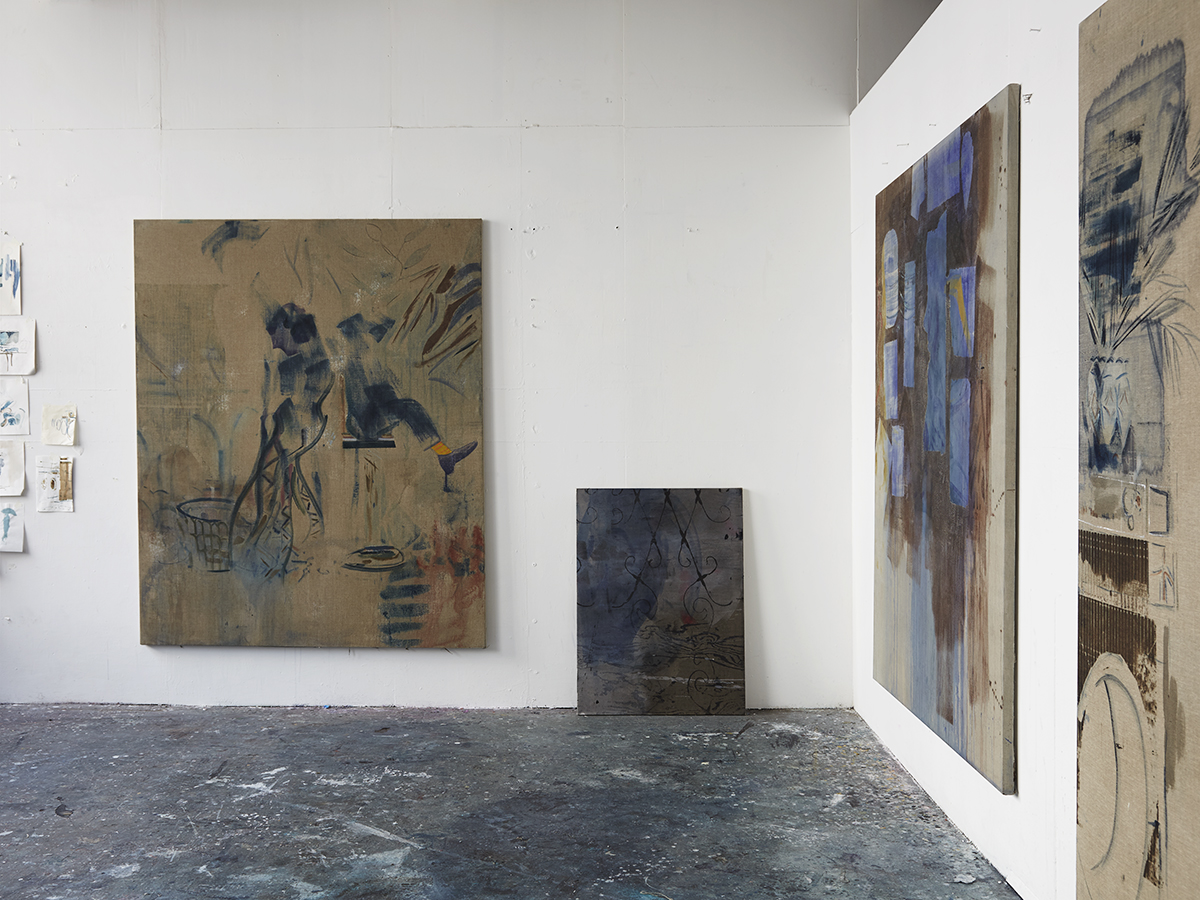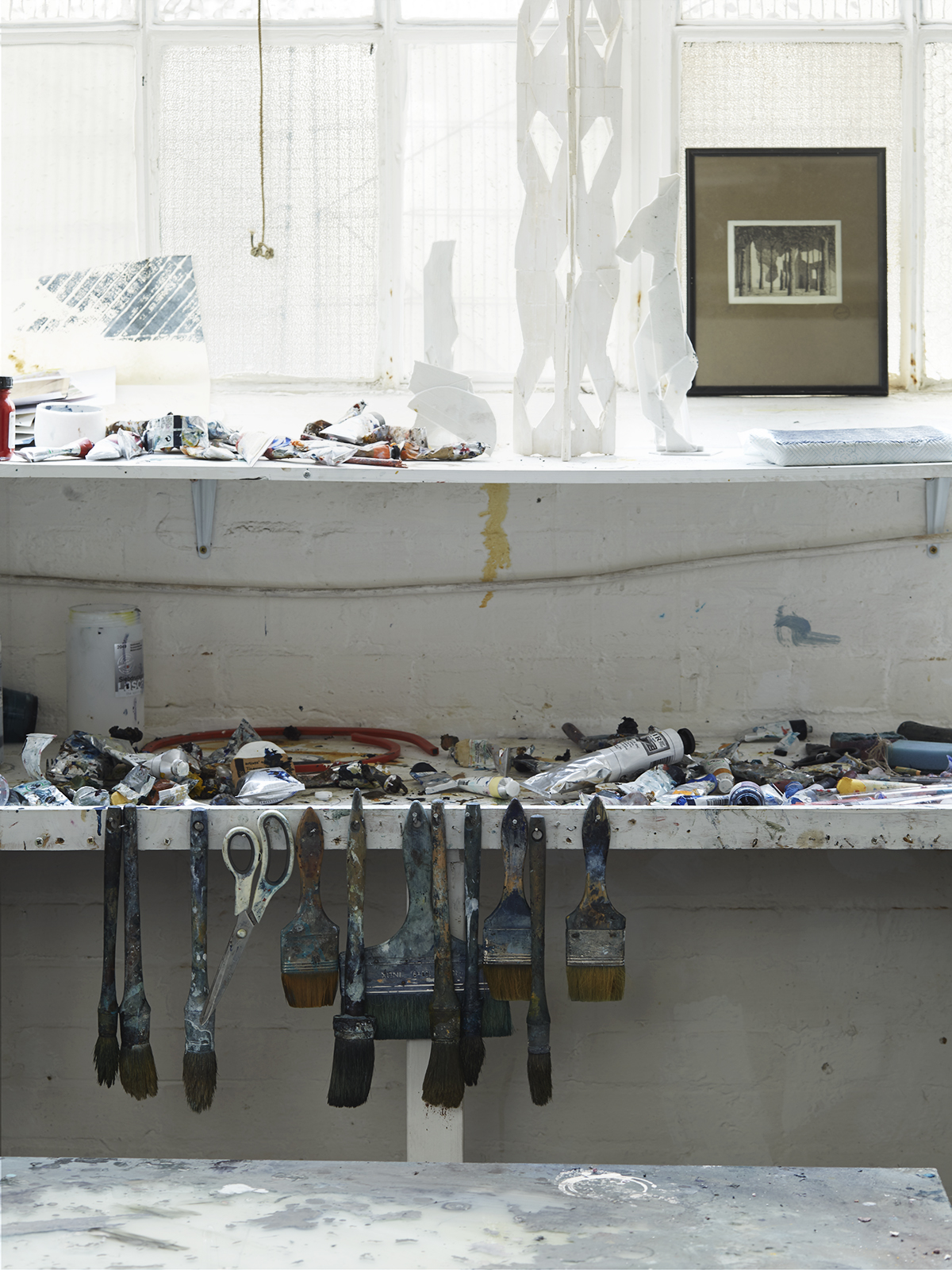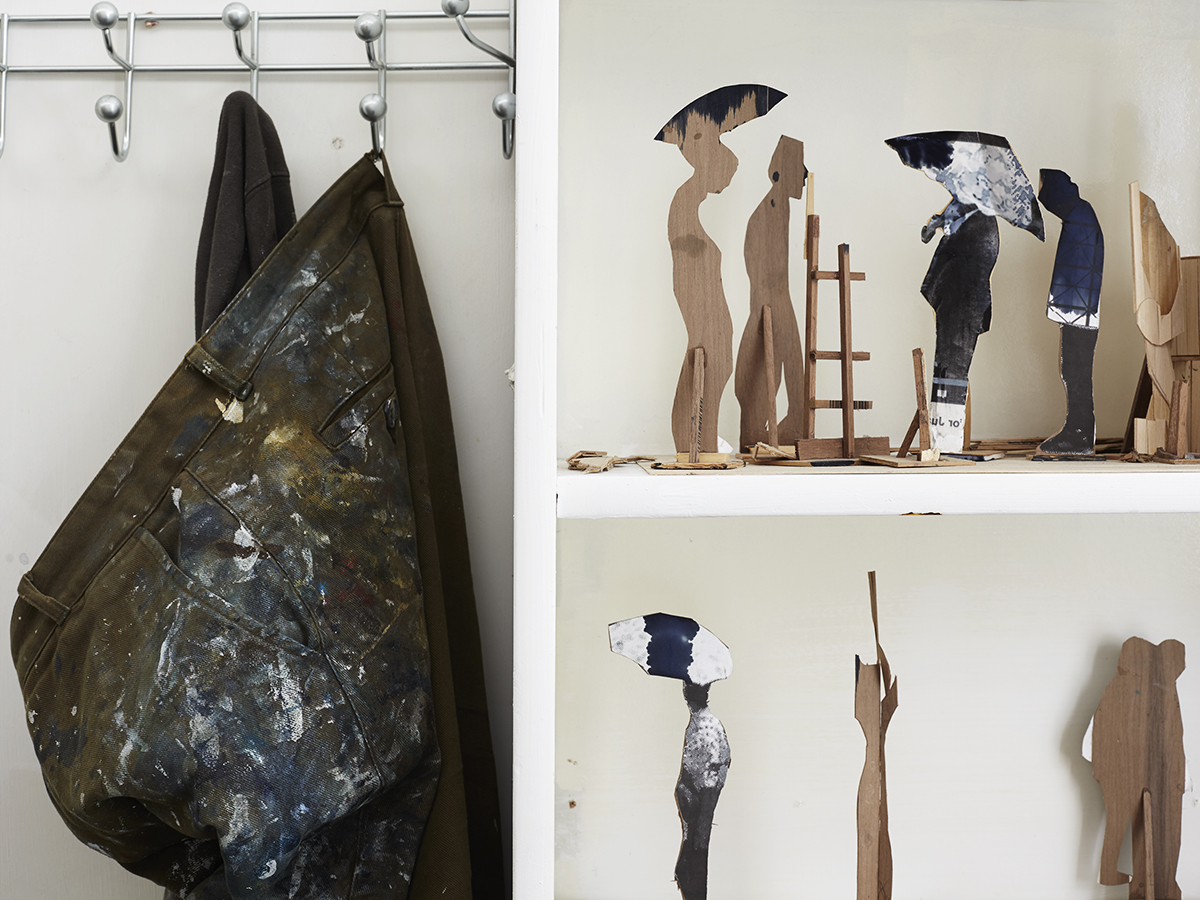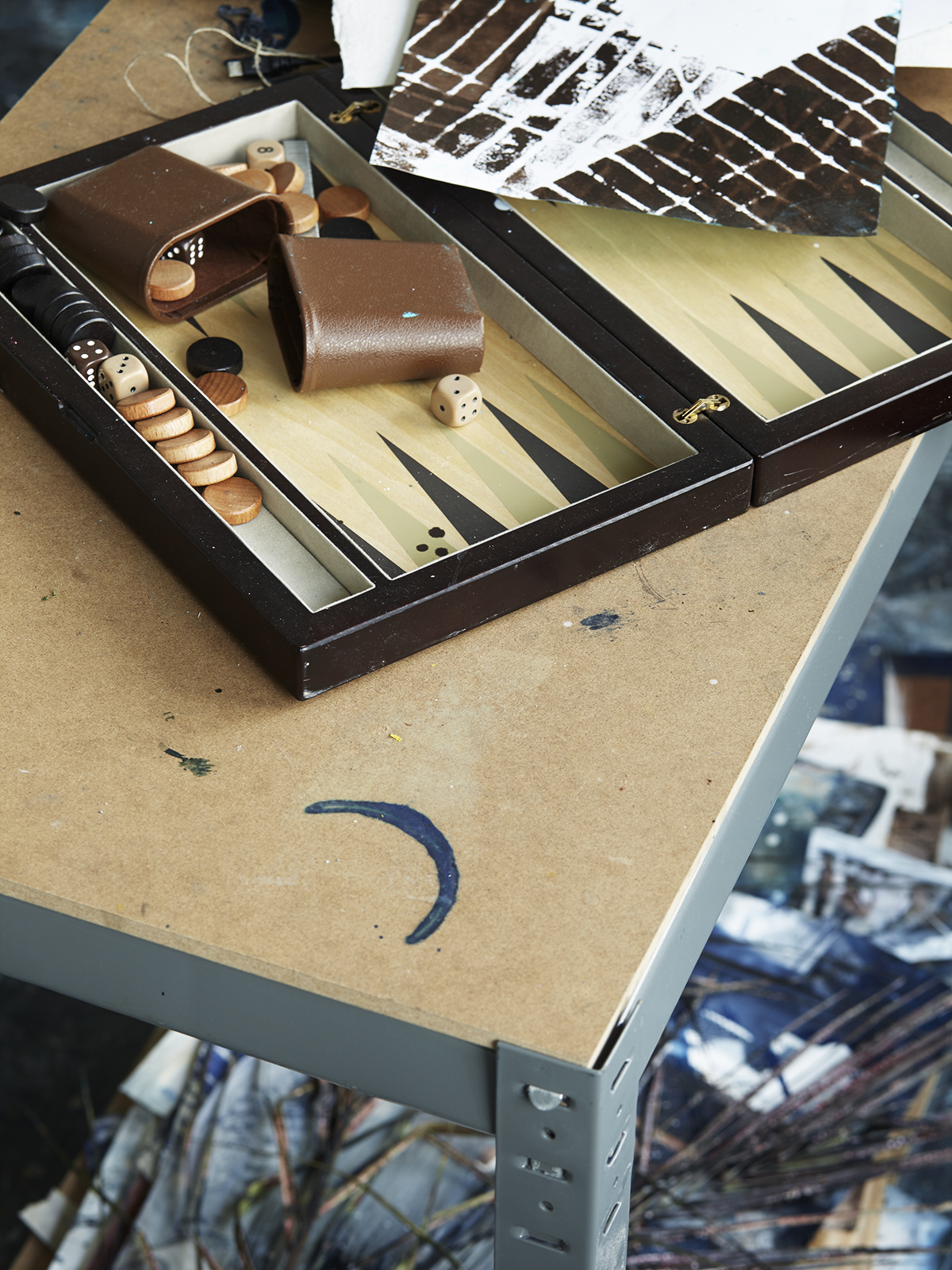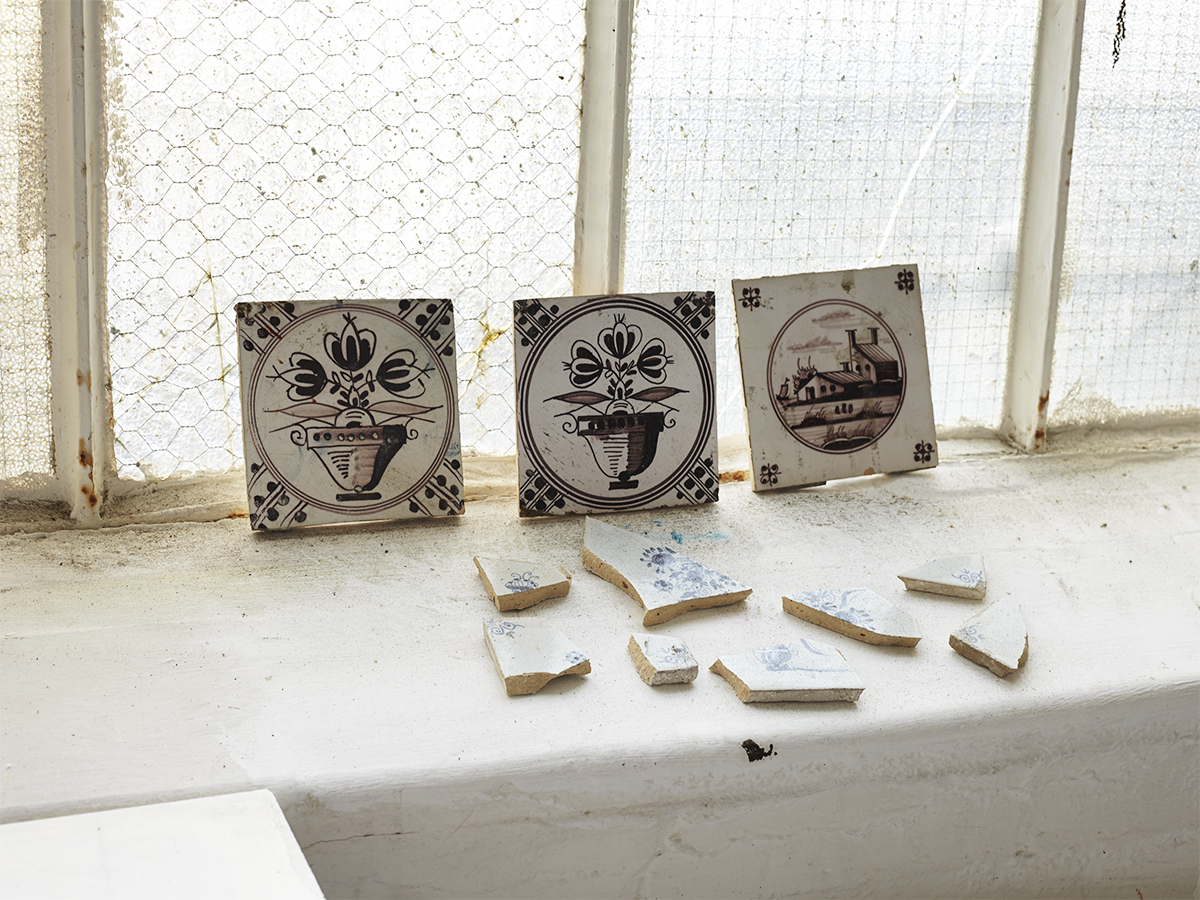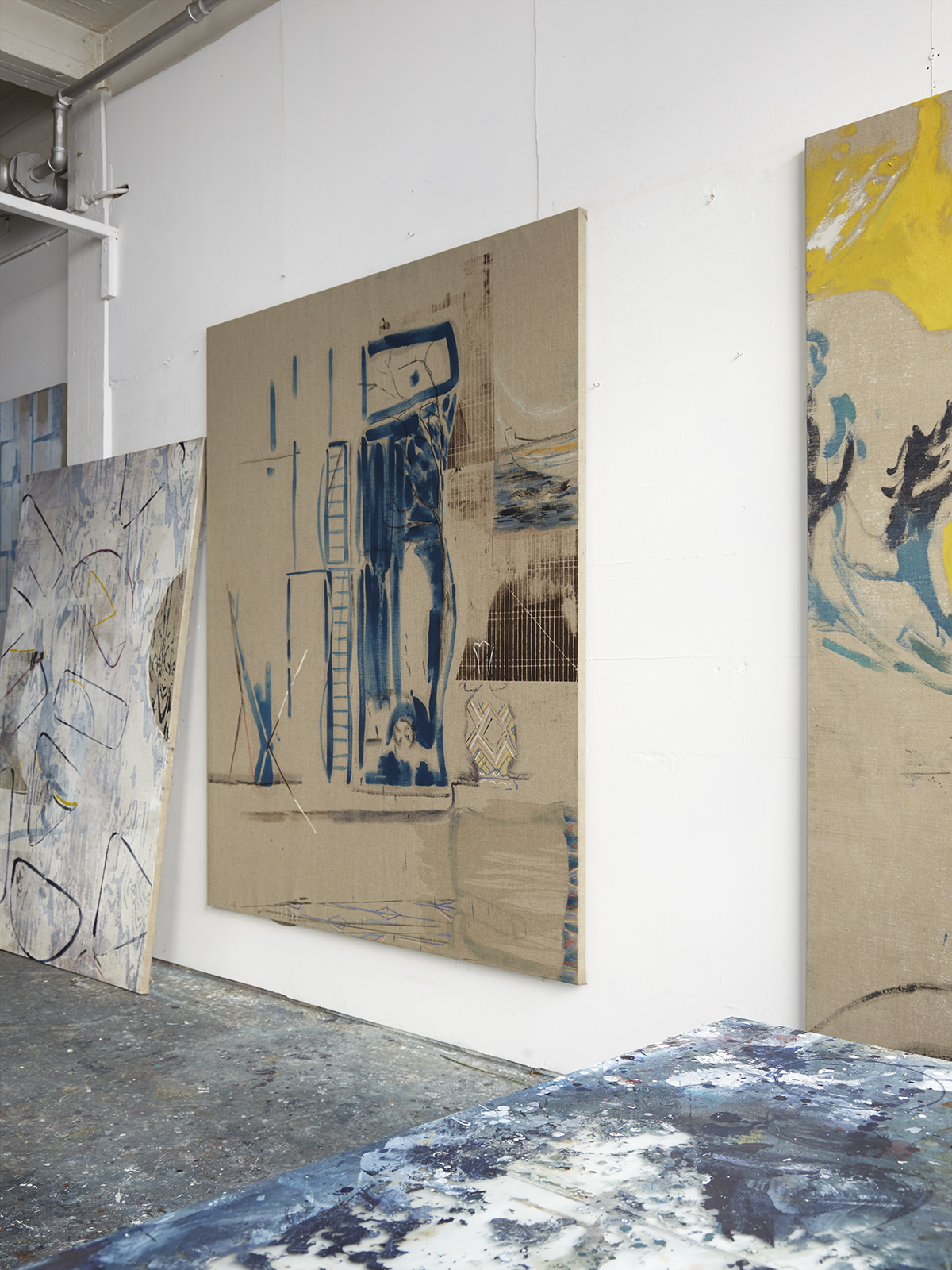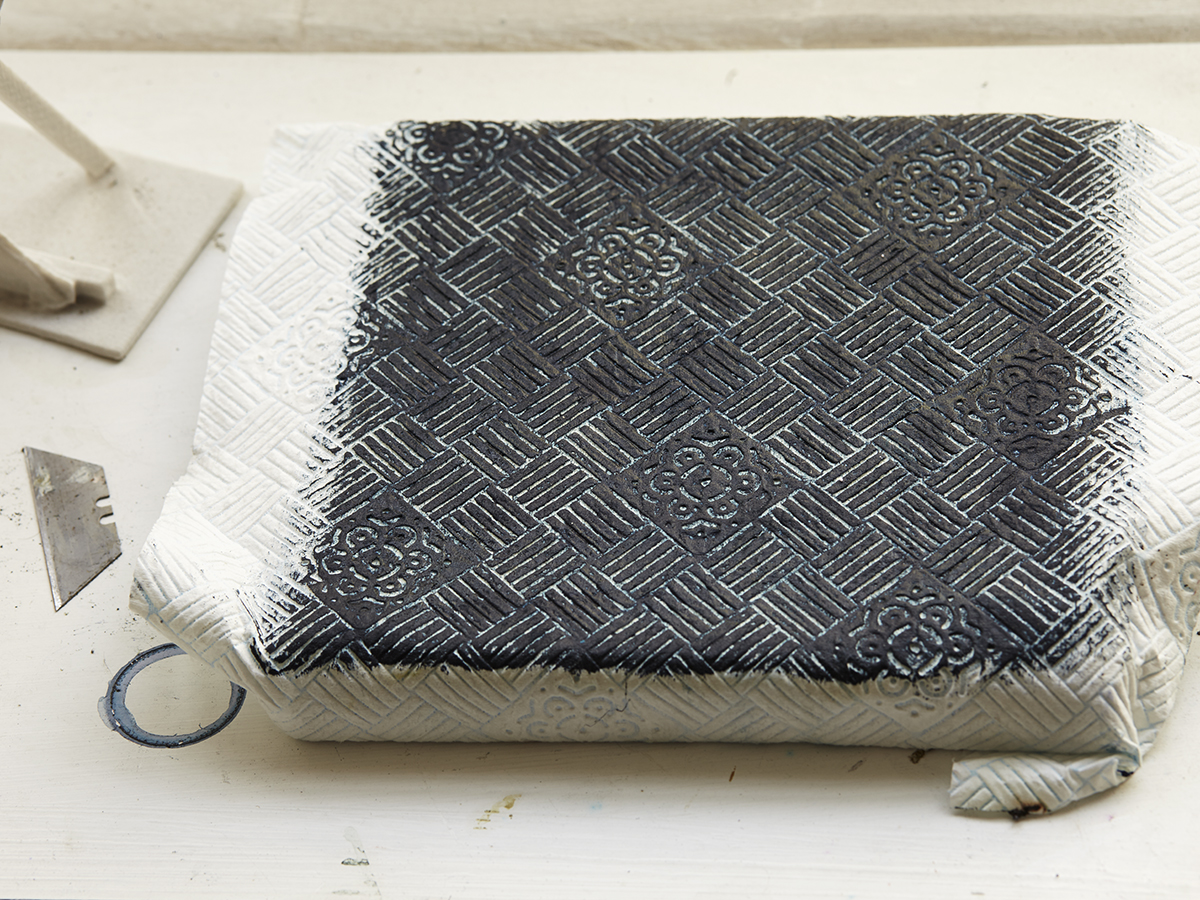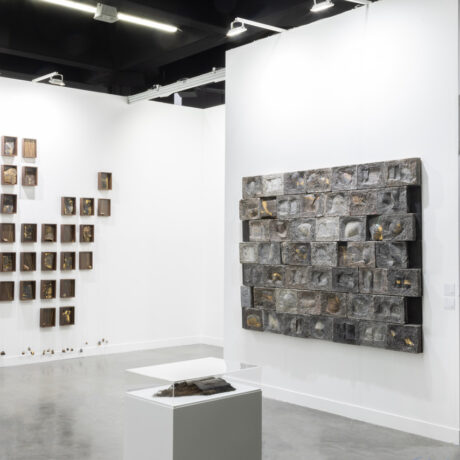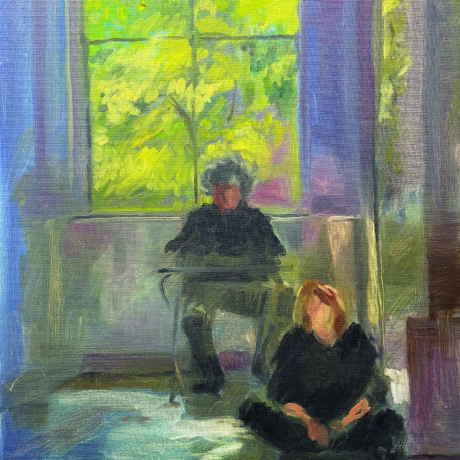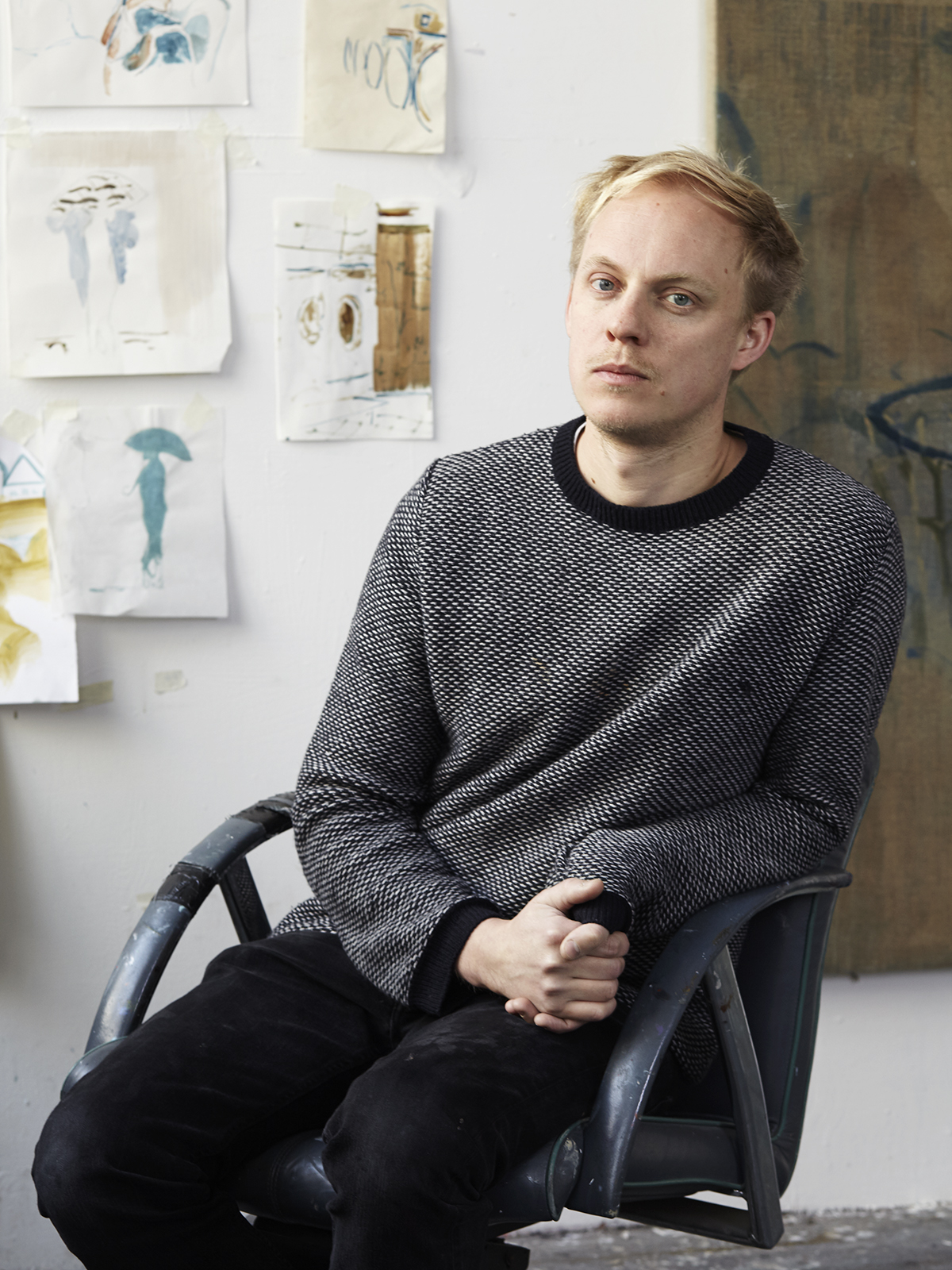
When did you begin work on this current body of paintings?
Not long ago. I had the Green Lanes show with Josh Lilley, which finished in the Summer, so really it’s an Autumn body of work. I’ve chosen the theme of the launderette, specifically one on Golborne Road in West London. I thought it was an amazing space, so I took some photos there and then went back and talked to them a bit and started to make some sketches—there is a lot of detail in the sketches, and then when I come to expand the paintings things get a little more disconnected and fragmented.
What made you decide to form your new work around the launderette?
I haven’t spent a lot of time in launderettes before, but you stare into the washing machine, into the water and get quite hypnotised in these spaces. They’re quite private, but then they’re also public and communal. The space is covered in all these amazing signifiers of far away. It’s Portuguese run so there are paintings of Portugal and these fantastic palms that run along the top of the washing machines. I think those are the kind of spaces that I’m always drawn to, that have this idea of exoticism, reminding whoever has decorated the space of their homeland. London can be like that; Golborne Road is called Little Morocco but there are also all these Portuguese immigrants who live there as well. I thought that was quite interesting and it seemed to be summed up in this space. There is an incense burner which is on top of one of the washing machines that has this fantastic pattern, which is used in some of the paintings as well. I asked and they weren’t quite sure where it was from, but they thought it might be Egyptian, and again it was this amazing mishmash of cultures. The diamonds on the pot have a nice relationship with the diamonds from the linoleum floor. I guess it’s the colour and form that I’m really drawn to.
How do you tend to choose the spaces that you use in your work? Are they usually places that you have hunted out, or do you walk into a space, and it just hits you?
With this one it just hit me, but Green Lanes was more of a familiar space. I had spent a lot of time going up and down it, pushing my daughter in the pram to Clissold Park and back so it was a space where I had looked into the rooms. They are always quite familiar domestic spaces, but I hope when I paint them something unfamiliar happens, that you get something uncanny, and can bring out something else, something more personal. With this particular project I have also found the film My Beautiful Launderette, and some of the scenes were shot near the launderette that I found on Golborne Road. The film has this incredible launderette with a wonderful mural with big painted waves—which mirrors the cascading water. Again, in all these paintings there is an interest in—especially when you have a load of pot plants—the relationship between nature and man. The JG Ballard Drowned World feeling of something that is washing away. It comes even living in the city, the idea that nature could reclaim it at any point.
These paintings do actually look quite wild—there is also the suggestion of a psychological space that is present in a lot of your works. Do these link with the psychological state that you experience in these spaces?
I think that’s it. I’ve been to a lot of the spaces, and it is an atmosphere and a psychological space—those corners of the room. There is something there that I want to get out my system and talk about.
In terms of process, do you begin with recognisable forms that you then work back from?
Yes, but I think it’s important for the show to still have some recognisable forms–although my favourites are actually quite abstract. It is always about reducing elements to patterns and shapes. I work in negative space quite a lot, it evokes a feeling of trying to remember the space and not being able to properly. That cloudiness that you get through memory, and trying to recollect something, I think that’s what painting can do that other mediums can’t.
Do you feel there is a sense of completion ever?
Not really no. I quite like artworks in general that don’t feel as though there are completed. There is an absence of resolution, it could have gone either way. It’s tricky when you try to complete a work and go that step too far, then it can kill it off. Quite often I will reverse the painting, so some have other paintings underneath them—maybe it’s gone too graphic but something might have bled through to the other side that I really like.
When you’re working on a series do you tend to start the paintings simultaneously?
Yes pretty much. I usually start by taking photos and then I’ll do some drawings. For this series I looked at the landscapes that were hanging up in the launderette, a reflection in the window of a Mamma Mia poster, a shirt hanging, waiting to be washed. There was a fantastic landscape with people walking through, which was actually quite sad looking. Quite a lot of the things hanging there did remind me—perhaps because there was one of a boat, I guess it’s in your head because of the news—of this idea of travelling and people trying to get to England.
Once you have taken that initial step of creating the drawings, do you just work from them for the painting? Or do you keep returning to the source material?
I get locked in to certain things—so with this one suddenly the washing basket became a motif. It starts quite broad and then really narrows down. You only really need 2 or 3 real moments to lock the viewer, to give you a sense of, ‘I know what this is, there is a specific place here’. And then you drift. It’s quite similar to a dream narrative, you usually have that one thing.
Who would you say your main influences are? Do they tend to be painters, or are there quite a few from outside the art world as well?
It’s quite an even spread. There are a few writers who I love and I still don’t know if it’s possible to be directly influenced, but people like Sebald and Ballard, people who describe cities and memory. Those are the people who get me out of bed, that you could be part of that canon. Then there are painters as well obviously and other artists who deal with those things. Munch is someone who I think about a lot, his paintings never really look finished, they have these incredibly loose feelings, as though the have just been abandoned. Like a lot of people I was very influenced by contemporary painters at college, even after leaving college, but the more I look at it the more I find I’m influenced by the older artists. And then of course you realise those were the painters who influenced the contemporary artists who you have been looking at! It’s very inspiring to go to the National Gallery and just lose days there. I never thought that would be the case.
There is a weightiness to your work that does look as though it’s been inspired by some of the older painters, even the deep colour palette.
I was reading up about Chantal Akerman recently–I really like that she created a lot of really melancholic interiors–and someone described her palette as traditionally flemish. I love those sort of palettes, there are reduced colours but also a lot of different colours coming in, they’re just very subtle. My mum is from Holland, and I thought maybe there is this palette to my work as well. There is not much colour going on in the landscapes in Holland and Belgium. There is a mistiness and never ending horizon because it’s so flat.
The paintings feel quite melancholy. Would you say that there is that element?
Yes definitely, I think there is something innately melancholy about an abandoned room, a room without any people in it. Sometimes it’s a ghost of presence. I’m interested in the detritus of modern life, the things that people leave behind and what that says about the people that inhabited those places. There’s a really nice Nabokov quote I read recently ‘the dream life of debris’. It’s such a nice little phrase. I love the idea that things have a life of their own and might survive their owners, even pot plants might. But there is a melancholic idea to them.
Did you always want to be a painter, was that how you began your practice or has it become more focussed since?
No, at the Slade I did quite a bit of video work, and at the RA I spent all this money on glass bricks and then projected videos into them. I think I’ve always been interested in things blocking your view, and different ways of establishing that you aren’t in the work, so removing the viewer. I was always painting as well, but I was such a sceptical painter. Some people love it, and that’s all they’ve ever wanted to do. I always thought it had really big limitations and probably always wanted to try something else, but you have your way of thinking and actually it turns out that painting is the best for me.
Are you quite spontaneous with your mark making, do you paint with quite a lot of freedom?
I don’t really practice too much, I tend to go on a big scale straight away. You get into a weird zone, into a nice place. It can take hours to get there but then you don’t realise where you are and you’re just listening to this ambient music. You’re locked in and it becomes like a magic eye almost. My peripheral vision is actually really important when I’m painting, lots of my paintings develop while I’m sitting at my desk and not looking at them directly. I think my favourite works are really accidental. I have set up plans of where I want each painting to go, but they have all changed. That’s the trick of art, the dichotomy that all your best laid plans go out the window when you’re actually making them.
Nick Goss is showing at Simon Preston Gallery from 9 January until 21 February. Photographs © Tim Smyth.
